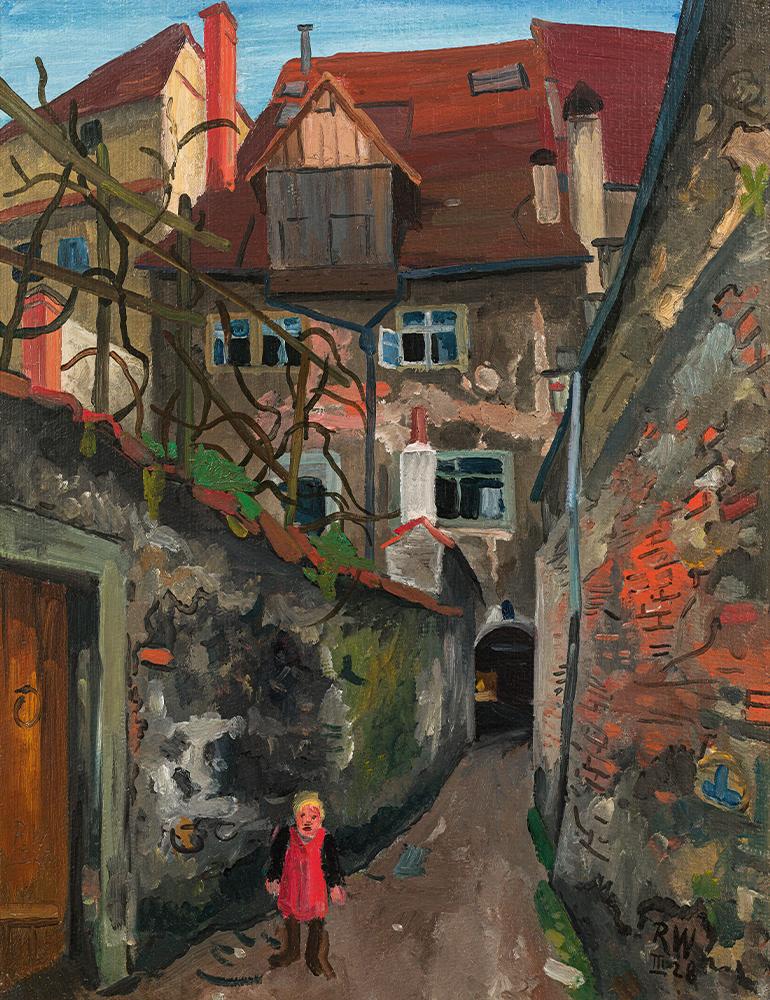The style of this work seems to differ from the one Pauser uses in “Child with toys” – it appears less cool, more lively. In what point is it nevertheless of work of the German “Neue Sachlichkeit” style?
Claudia Mörth-Gasser: Wacker progressed in the mid 1920ies from Expressionism to the phase of “Neue Sachlichkeit”. He started his city paintings often as oil studies on cardboard; sometimes even working outside. This is why they appear more free and gestural, like the work we have here. Sometimes, he replicated the same motive later in his studio on wood, in a glaze technique formerly used by the Old Masters.
There is also a likeness in theme with other painters of the Neue Sachlichkeit: it is the interest in neglected, dilapidated places.
Is the depiction of the City a typical motive in Wacker’s work?
Barbara Berger: Yes, he used motives based on neighbouring cities again and again. However, he was not interested in their lively aspects, but on the contrary in their lost, forgotten spaces. This is how he presented past idylls, and how he showed loneliness in the modern world.
CMG: Wacker’s cities are void of people, this is why the child in this picture is rather unusual – it serves as an identification figure for the viewer. Like in Pauser’s picture, the figure is static and seems doll-like. It stands for the estrangement of the modern life and emphasizes the uncanny aspect of a new, fragile world.
What are the details through which we can see the disillusionment and loneliness by which this generation of painters was afflicted?
CMG: Important details are for instance the crumbling wall and the damaged building fronts. They stand for the fugacity of life, the passing of time. The child, clothed in red, creates a different, mysterious aspect. This is also a typical attribute of the Neue Sachlichkeit: the pictures are full of symbols and like to ask riddles.
Did the Austrian painters treat their time differently than their German counterparts?
CMG: In Germany, there were Otto Dix and Georges Grosz whose pictures are pungent, provocative and openly critical of their society. The Austrian artists are much more subdued and subtle; in their work, the melancholy and theme of the fugacity of life are dominant.
What kind of atmosphere does this picture create for you?
BB: Wistfulness is a key word here, the longing for a better, but sadly bygone time. However, I can spot a small ray of hope: after all, there is a bit of blue sky just above the roofs.
(Alexandra Markl)

